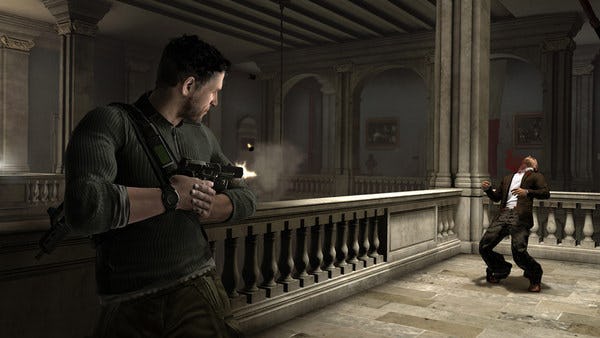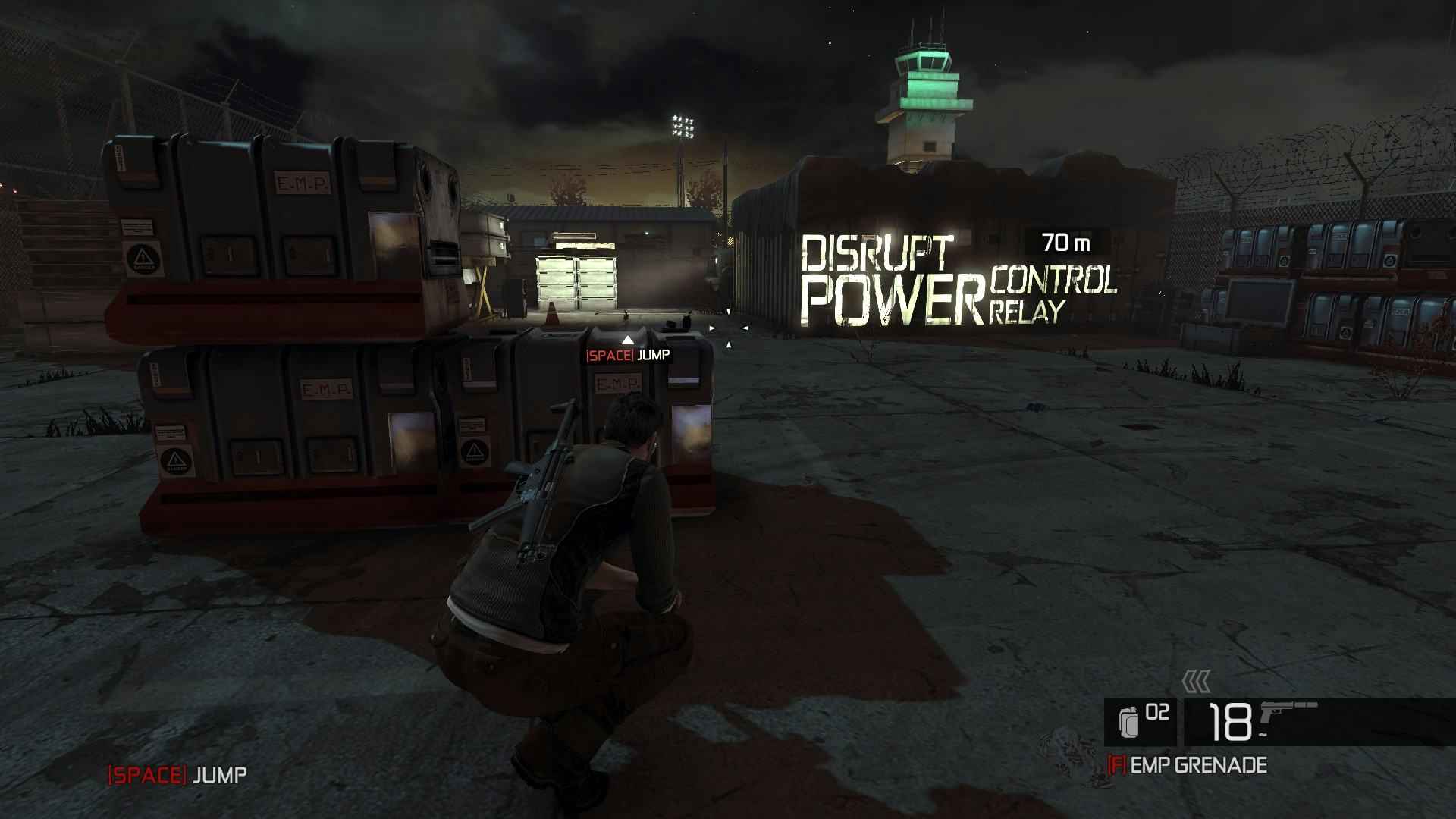
The Splinter Cell series was never for everybody. The original trilogy may have been a critical darling, but it never reached the heights of popularity of its stealthy competitor, Metal Gear Solid. Heading into the PlayStation 3 and Xbox 360 era, a game about a slow a methodical special agent behind enemy lines had even less commercial appeal, as more bombastic action series like Call of Duty and even other games in the Tom Clancy-verse like Rainbow Six and Ghost Recon.
If it ever wanted Sam Fisher’s exploits to find the success its other series were having at the time, Ubisoft was going to have to reinvent the franchise. Following the wild events of the divisive Splinter Cell: Double Agent in 2006, this was the perfect time to do so. That game saw Sam Fisher execute his longtime boss and friend Irving Lambert, and being forced to go off the grid. With this setup for an inevitable sequel, developer Ubisoft Montreal wanted gameplay to reflect Fisher’s new roguish lifestyle.
Pre-release footage of the game dating back to 2007 reflected the studio’s intention to do just that. It showed a haggard Fisher walking around in public spaces filled with hundreds of tourists. Instead of stalking enemies in the shadows, this follow-up appropriately called Splinter Cell: Conviction, would have our hero hiding from guards in plain sight using crowds, luring enemies in secluded areas before becoming the aggressor, and even getting into full-on fistfights when his cover was blown.
This early version of Conviction felt like a logical Jason Bourne-ification of Splinter Cell. It was fleshing out the social stealth mechanics suggested in the first trailer for the soon-to-debut Ubisoft series Assassin’s Creed. Conviction was set to be an experimental deviation for the series.
As infinitely interesting as this new approach was for Splinter Cell, it didn’t go over well with fans. Double Agent (which was handled by sister studio Ubisoft Shanghai) had just given players a weird spin on what came before it. Fans weren’t receptive to another entry straying from what hardcore fans wanted. After negative reaction to the beta footage of Conviction, Ubisoft, rather than stick to its vision, was forced back to the drawing board.
It would be a long two years of silence from Ubisoft before the public would see the new and improved Splinter Cell: Conviction. At Xbox’s E3 2009 Showcase (the weirdly memorable one where The Beatles pulled up), Conviction made its grand re-debut with another, all-new direction for the series. Taking very obvious cues from the network television series 24, Splinter Cell’s latest entry would throw out its ideas for social stealth, Bourne-like melee combat, and on-foot chases in favor of making Fisher a Jack Bauer-style execution machine.
He was no longer looking to avoid detection at all times, striking only when necessary. He was now a super soldier who stalked, outwitted, and murdered his enemies in the name of his freedom. The new Sam was just as capable of getting into shootouts from behind waist-high walls as he was hiding in the shadows, reading enemy patrol patterns.
There was no denying that this game looked spectacular. Between its bold approach to UI (displaying mission objectives on level geometry is still one of the cleanest and most unique things Ubisoft has ever done) and its cutting-edge graphics, Splinter Cell’s new stylish comeback worked as intended. It managed to get the attention of the mainstream Call of Duty crowd. As an Xbox and PC exclusive, it also had the commercial machine behind it.

But it was quite a bit of whiplash for longtime fans of the series. After four games that gave players the choice to go into high-stakes situations all-quiet, without taking any lives, it seemed out of character for the series to introduce entirely new mechanics dedicated to shooting multiple bad guys in the head all at once. Fisher’s new nimble, tiger-like movements were also a big change from the slower pace of the influential Chaos Theory. Conviction dialed up the essence of Splinter Cell’s compelling brand of “action” to 11, but no longer seemed concerned with maintaining the stealth part of the series, apart from letting players get the jump on enemies. For those who loved the original trilogy, this was unforgivable.
Letting those fans down didn’t matter, however. When Conviction was finally released in April 2010, it would sell 1.8 million copies in its first month, a landmark upfront success compared to its predecessors. It was even bundled with Xbox 360s, meaning it was likely a lot of people’s introduction to the new generation of video games.
In a weird instance of history repeating itself, Splinter Cell Conviction was the series’ Assassin’s Creed moment years before it happened. Like Assassin’s Creed, Splinter Cell broke away from the very identity of the series mechanically and found unprecedented success in the process. Thankfully for Splinter Cell fans, Ubisoft found a way to satisfy both camps in fewer than eight years. The very next entry in the series, 2013’s Splinter Cell Blacklist, masterfully balanced the faster pace of Conviction while bringing back the more strategic, stealth-based missions.
As for that original vision of Splinter Cell: Conviction, not all was lost. Many of those social stealth mechanics would be properly introduced to Assassin’s Creed’s later entries. Even the premise of early Conviction feels like it was the basis of the first Watch Dogs, which saw an equally grizzled white man on the run doing espionage in plain sight.
The Splinter Cell Conviction that we got may not have been what fans were clamoring for. When all we wanted was a prettier Chaos Theory, Ubisoft Montreal pulled the series kicking and screaming in a direction with more universal appeal. We may not have liked it at first. And it is still regarded as the black sheep of an otherwise beloved series. But the risks and deviations it took lighted the path towards Splinter Cell Blacklist, which is not only one of the best games in the series, but one of the best stealth games ever made.
Conviction isn’t a great representation of what people once loved about the Splinter Cell series. For that, I implore people to pick up 2005’s Chaos Theory on Steam or Xbox. But in the 15 years since its release, it can be recognized as one of gaming’s best takes on a modern spy thriller, and the necessary step forward that the franchise needed to stay relevant in the 2010s. Hopefully whatever’s next for the franchise will reinvigorate it in the same way.







